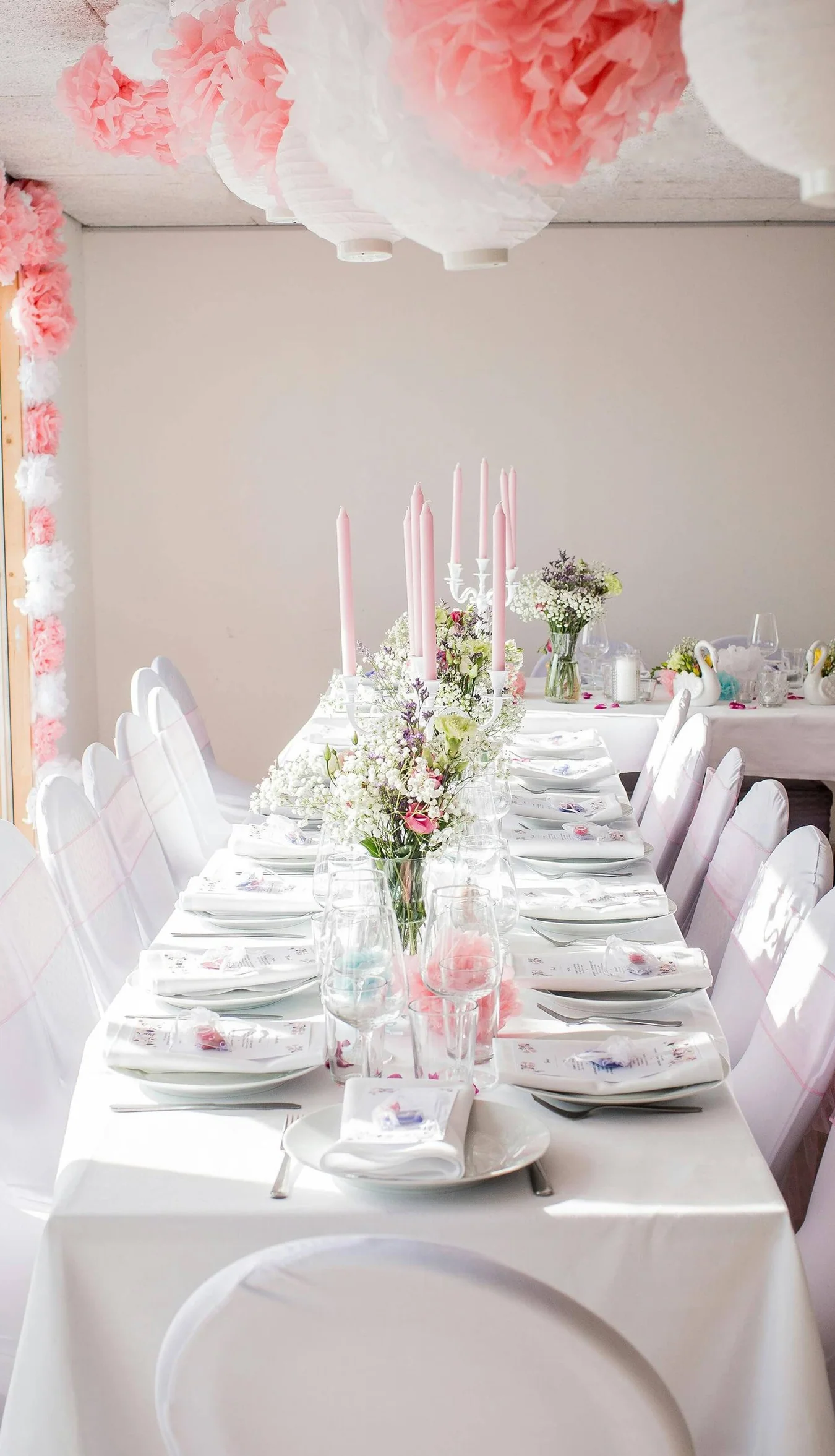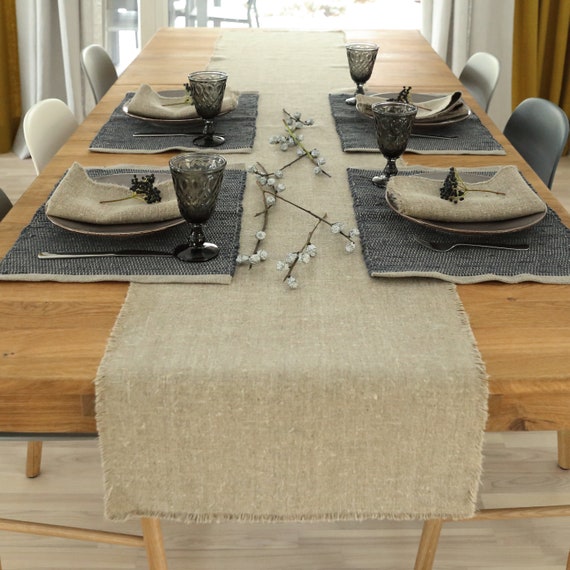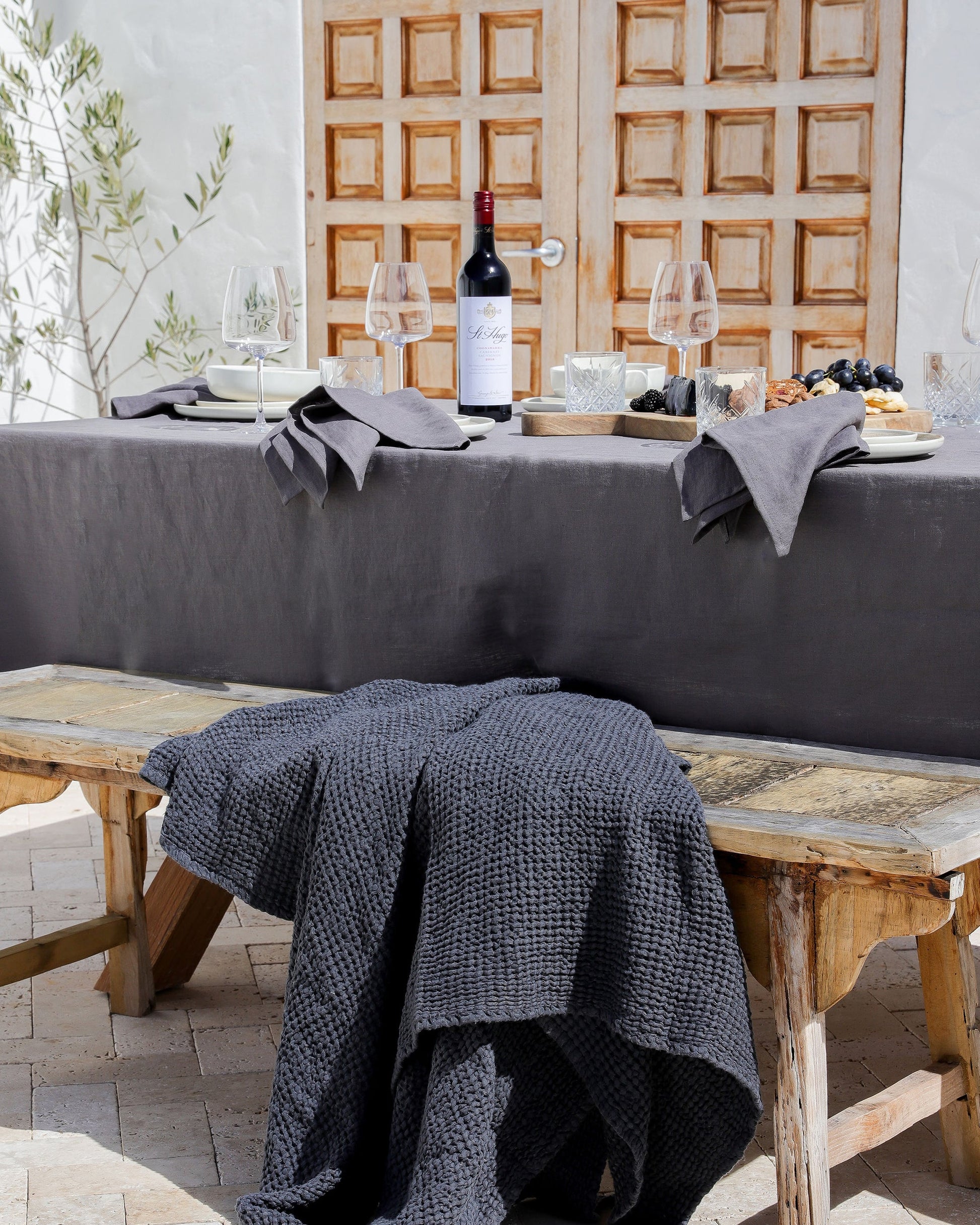Attractive Table Cloths: Improve Your Dining-room Design
Attractive Table Cloths: Improve Your Dining-room Design
Blog Article
Bed Linen Material Advancements: Exploring Modern Trends and Creative Applications in Layout and Fabric Sector
From sustainable manufacturing techniques to advanced weaving innovations, the development of linen is improving the landscape of the textile industry. As we delve right into the worlds of creative design applications and the appearance of linen blends and crossbreed fabrics, a new phase unfolds in which linen's function in future fabric advancements takes center phase.
Lasting Practices in Bed Linen Production
Sustainable practices in bed linen production have actually come to be increasingly vital in the textile sector's initiatives to decrease ecological effect and promote moral sourcing techniques. Bed linen, a natural fiber acquired from the flax plant, provides a variety of advantages such as longevity, breathability, and biodegradability. Nevertheless, typical methods of linen production can involve considerable water intake, pesticide use, and energy-intensive processes.
To address these challenges, many fabric suppliers are embracing lasting techniques throughout the bed linen production procedure. This consists of sourcing flax from natural ranches that prevent harmful chemicals and chemicals, applying water-efficient retting strategies to remove fibers from the flax stalks, and making use of eco-friendly dyes and finishes. Additionally, some business are spending in eco-friendly energy resources to power their manufacturing centers and reducing waste through recycling and upcycling initiatives.
Technological Innovations in Linen Weaving
With the growing emphasis on lasting methods in bed linen manufacturing, the fabric market is currently observing a rise in technological improvements specifically aimed at transforming the art of linen weaving. These innovations are reshaping the means linen fabrics are produced, offering boosted effectiveness, high quality, and creativity in weaving techniques.
One of the vital technical advancements in bed linen weaving is the integration of computerized looms. These sophisticated looms are furnished with software that permits intricate and complicated layouts to be woven with accuracy. By digitizing the weaving process, makers can achieve greater uniformity and precision in their bed linen materials.
In addition, developments in thread spinning innovation have actually made it possible for the manufacturing of finer and even more resilient linen yarns - table cloths. This results in softer and smoother bed linen materials that preserve their quality even after numerous uses and washes
In addition, the advancement of eco-friendly dyeing procedures and coatings for bed linen textiles is getting traction. These lasting techniques not just minimize the ecological impact yet additionally provide to the increasing customer need for morally produced textiles.
Creative Style Applications for Linen
Innovative artistic techniques are progressively shaping the imaginative style applications for bed linen in the textile market. Bed linen's all-natural visual charm and ability to blend with various other materials make it a favored selection for creating unique garments and accessories that provide to the environmentally aware consumer.
Additionally, developers are explore bed linen in home design, utilizing its resilient and breathable nature to craft stylish furnishings such as drapes, bedding, and upholstery. The texture and drape of bed linen bring a sense of sophistication and comfort to indoor top article areas, adding a touch of style to modern homes.

Bed Linen Blends and Crossbreed Fabrics

Hybrid textiles, on the other hand, take the principle of blending an action further by including additional components such as metal threads, recycled products, or conductive fibers. These ingenious fabrics not only increase the layout opportunities however additionally present functional facets like conductivity, antimicrobial residential properties, or boosted toughness. Hybrid fabrics are significantly being used in various sectors, including style, interior style, and technical fabrics, where the demand for multifunctional products gets on the rise.
Linen's Function in Future Fabric Innovations

In the realm of future fabric innovations, linen is expected to be a principal in the advancement of innovative practical fabrics. Scientists and developers are exploring methods to boost bed linen's intrinsic high qualities through technical improvements, such as integrating clever fabrics, nanotechnology, and efficiency coatings. These technologies aim to elevate linen's efficiency characteristics, making it appropriate for a wider variety of applications, from activewear to protective garments.
Additionally, the mix of bed linen with other natural or artificial fibers opens up unlimited possibilities for developing novel textiles with unique properties and performances. By leveraging linen's features and exploring ingenious blends, the textile industry is poised to present interesting growths that satisfy developing consumer needs and sustainability requirements.
Verdict
To conclude, the exploration of lasting practices, technological developments, innovative style applications, linen blends, and its duty in future textile developments highlight the constant evolution of linen textile in the modern-day style and fabric industry. With a concentrate on advancement and creativity, the flexibility and environmentally friendly nature of linen make it a beneficial material for producers and designers alike, leading the way for more growths and improvements in the field of fabrics.
As we delve into the worlds of creative style applications and the appearance of linen blends and hybrid textiles, a brand-new try these out phase unfolds in which bed linen's duty in future fabric innovations takes center phase.
Discovering the blend of linen with various other materials has led to the appearance of innovative blends and hybrid textiles in the contemporary textile market. Linen blends offer a distinct combination of the attributes of linen with those of various other fibers, resulting in materials that possess improved homes such as increased resilience, enhanced draping, and decreased wrinkling.The advancement of bed linen blends and crossbreed materials has actually established the stage for Linen to play a pivotal duty in driving future fabric innovations.In the realm of future textile technologies, linen is anticipated to be a key gamer in the advancement of innovative practical textiles.
Report this page